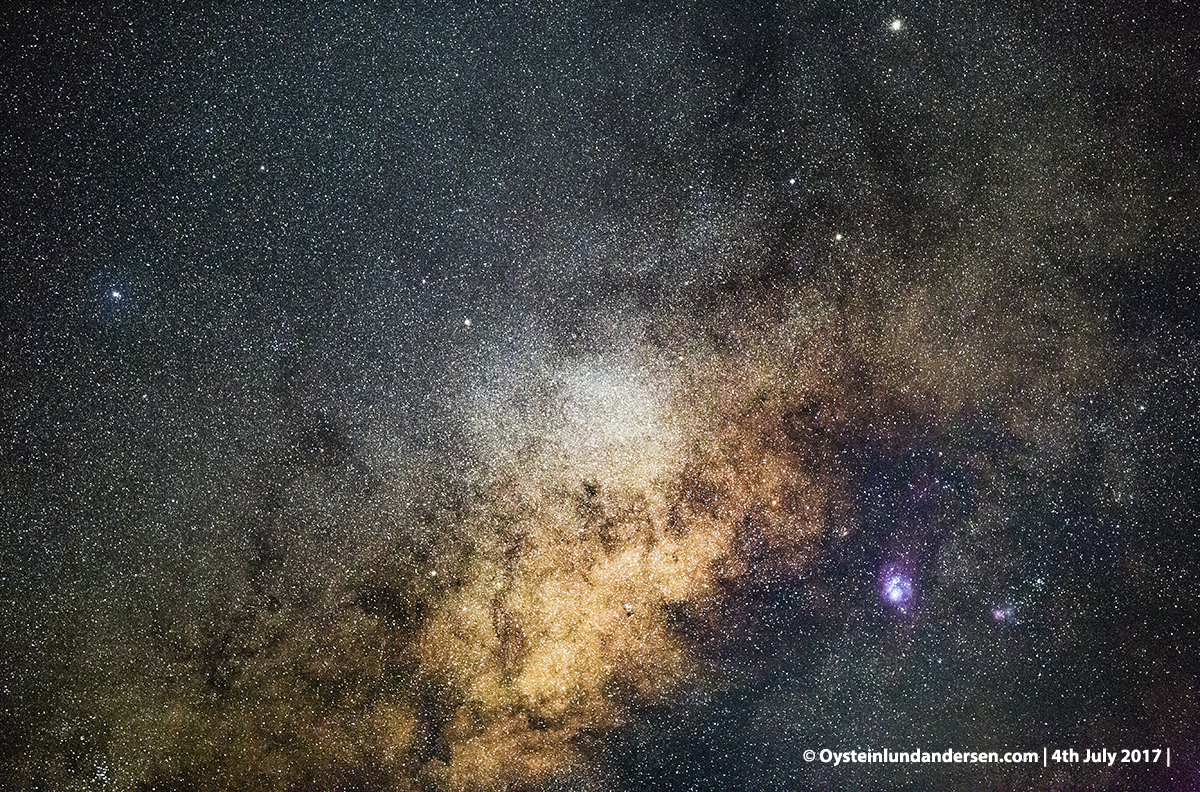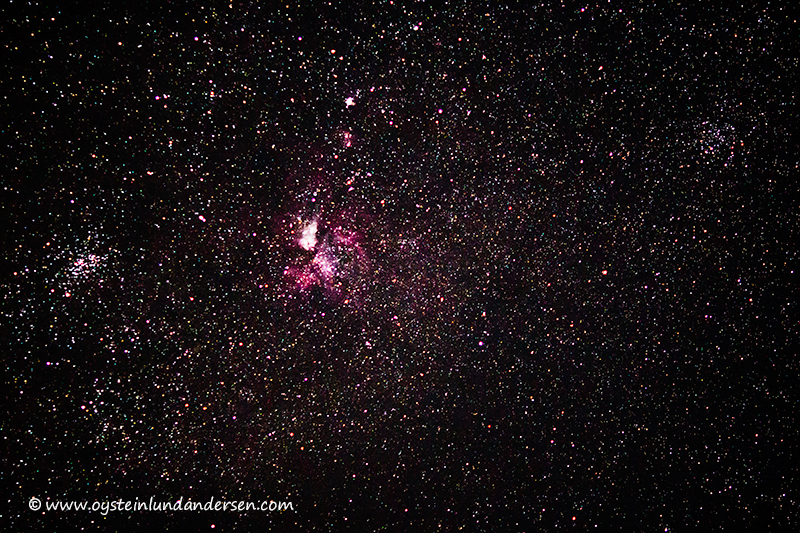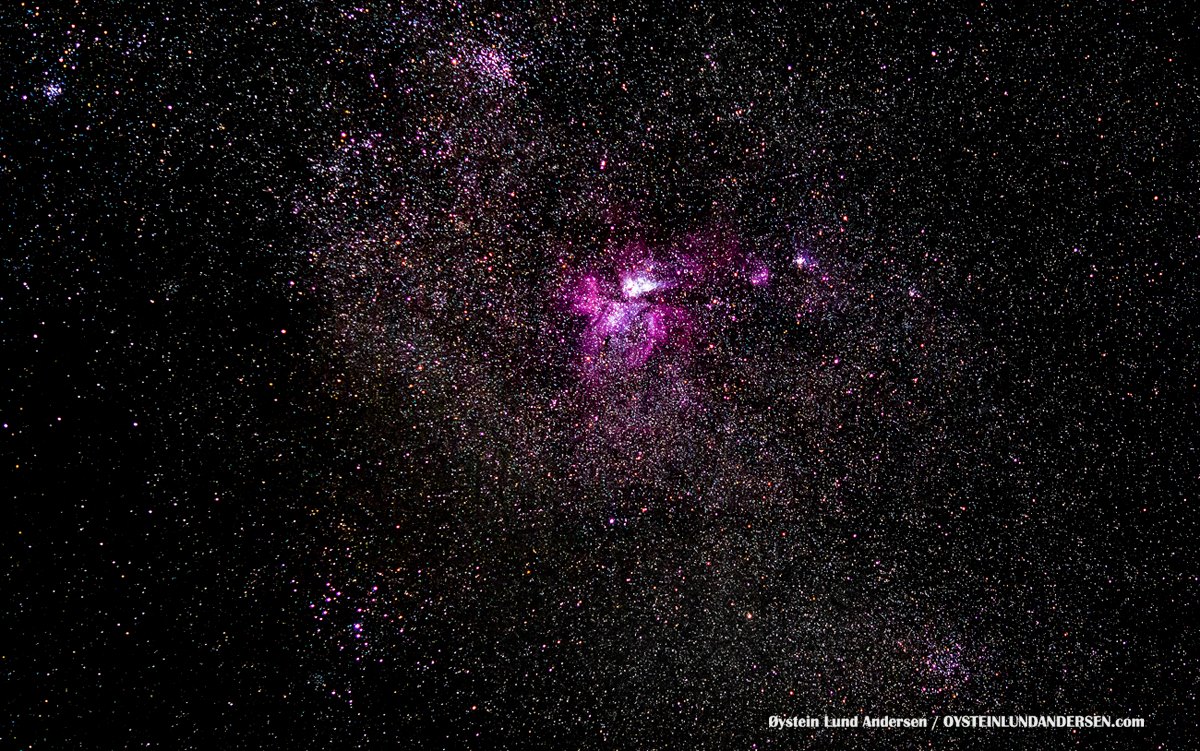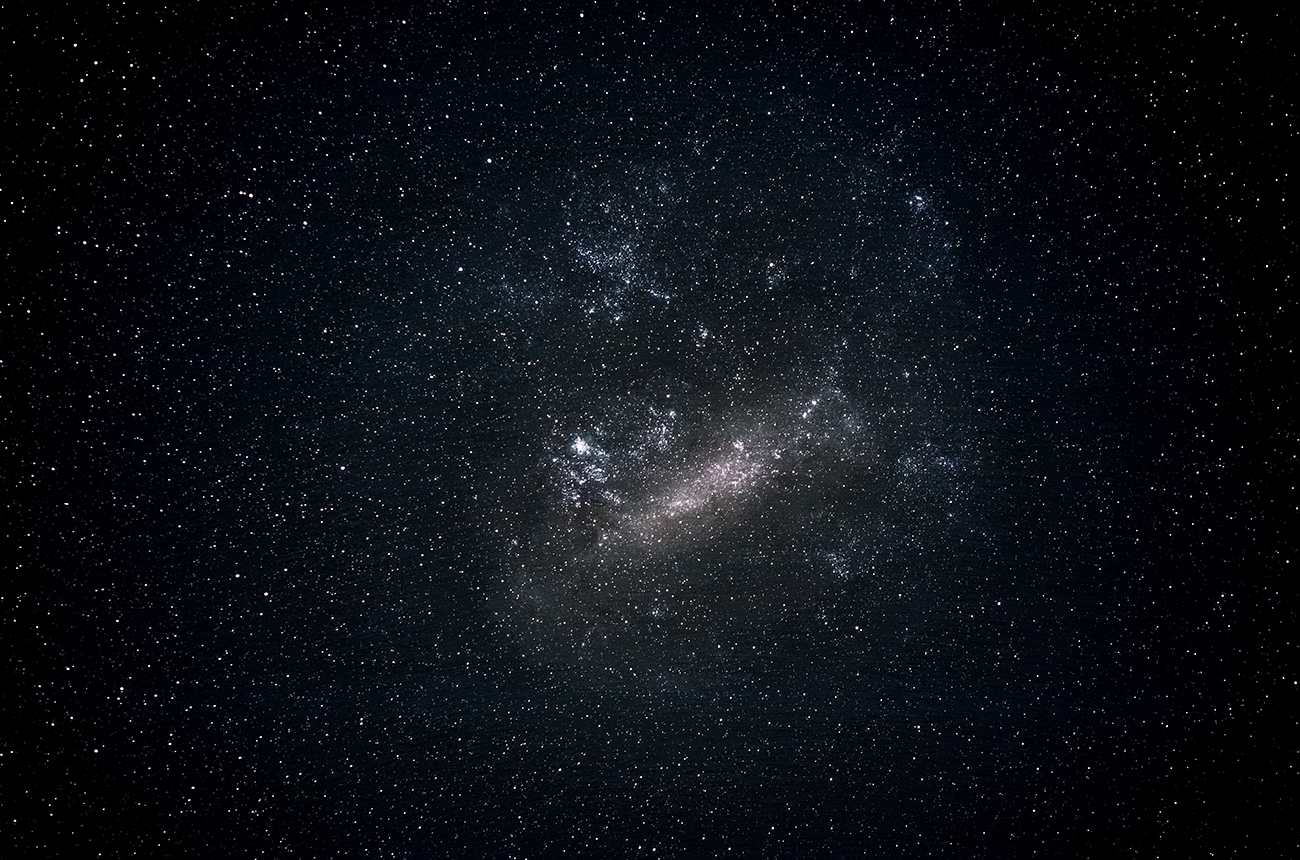A nebula is an interstellar cloud of dust, hydrogen, helium and other ionized gases. Most nebulae are of vast size, even hundreds of light years in diameter. Nebulae are often star-forming regions, such as in the “Pillars of Creation” in the Eagle Nebula. In these regions the formations of gas, dust, and other materials “clump” together to form larger masses, which attract further matter, and eventually will become massive enough to form stars. The remaining materials are then believed to form planets and other planetary system objects.
Photos is available in different formats JPG/RAW/TIFF. The photos are normally a combination/result of the stacking of many individal photos, to increase detail and reduce noise in the results.
Lagoon Nebula
The Lagoon Nebula is estimated to be between 4,000-6,000 light-years from the Earth.

The Carina Nebula
The Carina Nebula (also known as the Great Nebula in Carina) is a large bright nebula that has within its boundaries several related open clusters of stars. The nebula is one of the largest diffuse nebulae in our skies. Although it is some four times as large and even brighter than the famous Orion Nebula, the Carina Nebula is much less well known, due to its location in the southern sky. The nebula lies at an estimated distance between 6,500 and 10,000 light years from Earth.


Tarantula Nebula
